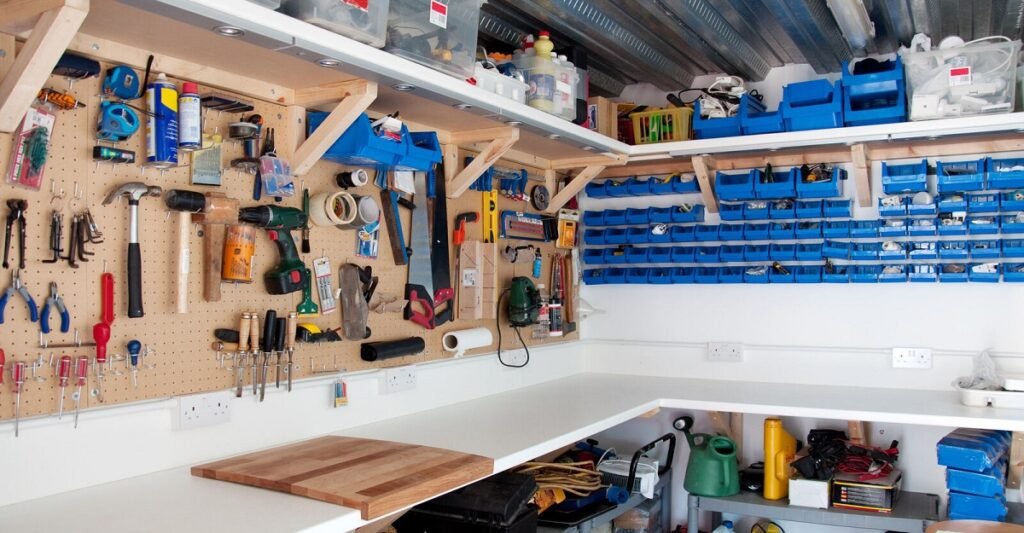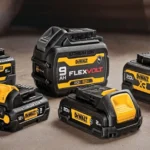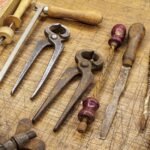Proper storage of power tools is a critical aspect of ensuring their longevity, functionality, and safety. The effective preservation of these valuable instruments safeguards your investment and promotes a conducive working environment.
To optimize the lifespan and utility of power tools, it is essential to explore diverse storage locations and understand the importance of storing tools outdoors, in workshops, and within garage spaces.
How To Store Power Tools Outside?
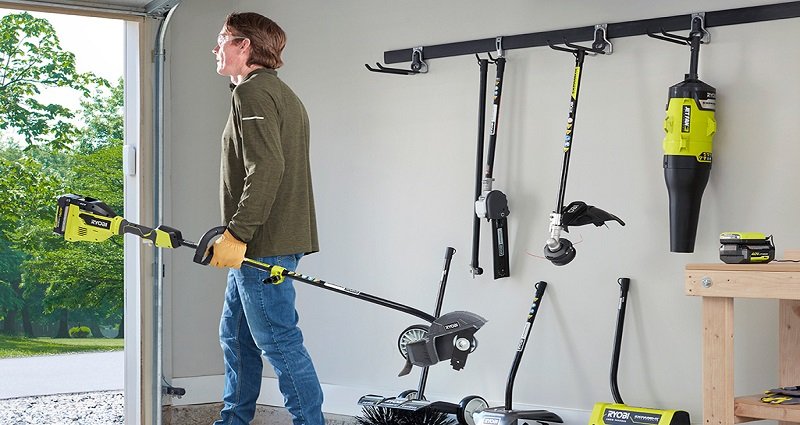
Ensuring power tools are stored carefully outdoors can guarantee longevity and functionality in challenging environments. To store power tools outside, follow the given steps:
Choose Weatherproof Containers
When opting for weatherproof containers for outdoor power tool storage, prioritize materials renowned for their durability. Robust materials, such as heavy-duty plastics or corrosion-resistant metals, ensure longevity and resilience against adverse weather conditions.
Sealing And Waterproofing Techniques
Employ sealing and waterproofing techniques to fortify the container’s integrity. Seal seams and joints with weather-resistant silicone to prevent water ingress. Employ weather stripping and rubber gaskets to enhance the container’s ability to withstand the elements. This will help prevent rusting.
Use Of Tarps Or Covers
Utilize durable tarps or covers designed explicitly for power tools. These covers act as an additional barrier against rain, dust, and UV exposure. Ensure a snug fit to prevent water accumulation and potential damage during inclement weather.
Sheltered Areas For Outdoor Storage
Identify and designate sheltered areas within your outdoor space for power tool storage. This strategic placement provides a level of protection against direct exposure to harsh weather elements.
Overhangs, sheds, or purpose-built storage structures can serve as effective shelters.
Cleaning And Lubricating Tools
Incorporate a routine maintenance schedule that includes regular cleaning and lubrication of power tools. Remove dirt, debris, and moisture using appropriate cleaning agents, and apply suitable lubricants to moving parts.
This not only ensures optimal performance but also mitigates the risk of corrosion.
Rust Prevention Measures
Implement proactive rust prevention measures to safeguard the tools from the corrosive effects of outdoor exposure. Applying a corrosion-resistant coating, such as rust-inhibiting sprays, provides an additional layer of defense against rust formation.
Regularly inspect tools for signs of rust and address any issues promptly.
How To Store Power Tools In Workshop?
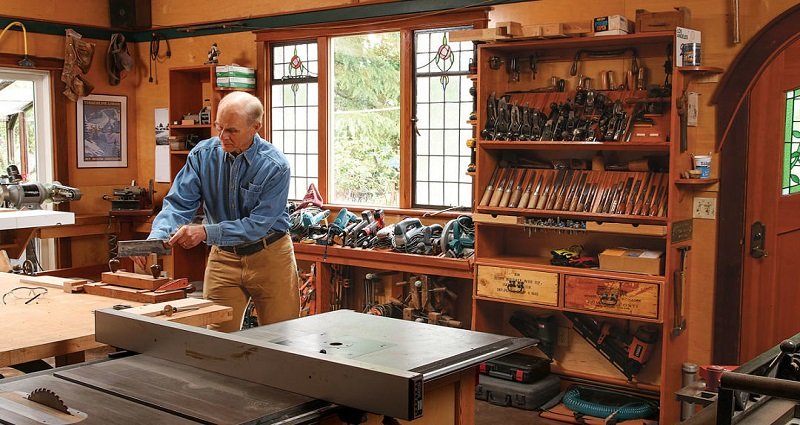
The workshop is the best place to store power tools. If you want to store power tools in the workshop follow the given practices:
Tool Racks And Pegboards
To improve the organization of the workshop, it is recommended to implement systematic strategies such as tool racks and pegboards. These structures help to arrange the tools methodically, making them more accessible and efficient.
By assigning designated spaces to each tool on racks and pegboards, the workspace will be less cluttered and easier to navigate.
Cabinets And Drawers
Incorporate power tools storage cabinets and drawers as integral components of the workshop’s organizational framework. Cabinets provide enclosed storage, safeguarding tools from dust and potential damage.
Utilize drawers for smaller tools and accessories, ensuring a structured layout that simplifies the retrieval process.
Humidity And Temperature Considerations
Maintain a controlled climate within the workshop by considering humidity and temperature levels. Power tools are susceptible to the adverse effects of extreme conditions.
Ensure a stable and moderate environment to prevent rust, corrosion, or damage caused by fluctuations in temperature and humidity.
Ventilation For Air Circulation
Prioritize proper ventilation to promote air circulation within the workshop. Adequate airflow aids in preventing the buildup of fumes, dust, and humidity.
Employing exhaust fans or strategically placing windows ensures a conducive working environment while contributing to the preservation of power tools.
Lockable Storage Solutions
Incorporate lockable storage solutions to enhance workshop security. Safeguard valuable power tools by storing them in lockable cabinets, drawers, and power tool organizers.
This not only protects against unauthorized access but also reduces the risk of theft and ensures a secure working environment.
Proper Handling And Placement Of Tools
Emphasize proper handling and placement of tools to mitigate accidents and damage. Establish designated areas for tool placement when not in use, and educate workshop users on responsible handling practices.
This fosters a culture of safety and contributes to the longevity of the tools.
7 Best Power Tool Storage Ideas
| Storage Idea | Description |
|---|---|
| Pegboard System | Hang tools for easy access. |
| Drawer Dividers | Prevent tangling and keep small tools organized. |
| Wall-Mounted Charging Station | Reduce clutter with wall-mounted chargers. |
| French Cleat System | Hang tools for easy rearrangement. |
| Rolling Tool Cabinet | Store large tools in a mobile cabinet. |
| Custom Built Shelving Units | Fit large tools on tailored shelves. |
| Workbench with Built-in Storage | Combine workbench and storage for efficiency. |
Organizing power tools efficiently can enhance your workspace and make your DIY projects more enjoyable. Here are seven effective storage ideas, categorized into Corded Power Tool Storage Ideas and Large Power Tool Storage Ideas.
Corded Power Tool Storage Ideas
- Pegboard System: Utilize a pegboard to hang corded tools like drills and saws. This keeps them visible and easily accessible while also saving floor space. You can customize the layout based on your frequently used tools.
- Drawer Dividers: For smaller corded tools, consider using drawers with dividers. This helps keep tools organized and prevents them from tangling with cords, making it easier to find what you need quickly.
- Wall-Mounted Charging Station: Create a dedicated charging station for corded tools. Mount shelves or cabinets at eye level to store chargers and keep cords neatly organized, reducing clutter on your workbench.
- French Cleat System: Install a French cleat system on the wall to hang corded tools securely. This method allows for easy rearrangement and customization as your tool collection grows.
Large Power Tool Storage Ideas
- Rolling Tool Cabinet: Invest in a rolling tool cabinet that can accommodate larger power tools like table saws and routers. These cabinets often come with multiple drawers and can be easily moved around your workspace.
- Custom Built Shelving Units: Build custom shelving units tailored to the size of your larger power tools. This ensures that each tool has a designated spot, preventing damage from being stored loosely.
- Workbench with Built-in Storage: Design a workbench that incorporates built-in storage for large power tools. This multifunctional approach maximizes workspace while keeping tools organized and within reach
How To Store Power Tools In A Garage?
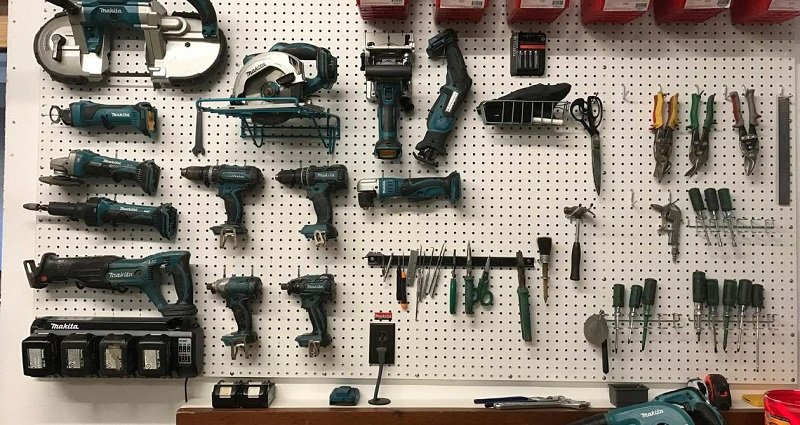
These mentioned space planning, shelving, and security measures in the garage ensure an organized, secure, and functional storage environment for power tools.
Utilizing Wall Space
Efficiently organize power tools in the garage by capitalizing on available wall space. Install wall-mounted storage solutions, such as shelves, pegboards, or racks, to store tools vertically.
This maximizes floor space and provides easy accessibility, contributing to an organized and clutter-free environment.
Floor Layout For Optimal Storage
Strategically plan the garage’s floor layout to ensure optimal storage of power tools. Dedicate specific areas for different tool categories, allowing for systematic placement and easy retrieval.
This organized layout not only enhances workflow but also minimizes the risk of accidents or damage during tool handling.
Adjustable Shelving Units
Incorporate adjustable shelving units to accommodate varying tool sizes and shapes. Adjustable shelves provide flexibility in configuring the storage space according to the dimensions of different power tools.
This adaptability ensures efficient utilization of available storage space.
Hanging Systems For Larger Tools
Implement hanging systems designed for larger tools, such as drills or saws. Utilize heavy-duty hooks or specialized hangers to secure these tools on the walls.
This approach not only saves floor space but also prevents potential damage that may occur when larger power tools be stored in tight quarters. It is a best practice to store multiple power tools.
Locks And Alarms
Enhance security in the garage by installing locks and alarms on storage units. Lockable cabinets or tool chests offer protection against unauthorized access, while alarms act as deterrents against theft.
These security measures contribute to safeguarding valuable power tools.
Hidden Storage Solutions
Explore hidden storage solutions within the garage to discreetly store power tools. Concealed cabinets or storage compartments can be integrated into the garage layout, providing an added layer of security and maintaining a visually organized space.
How to Store Power Tool Batteries?
The key points to store power tool batteries effectively include:
- Cool, Dry Location: Store batteries in a cool, dry place away from direct sunlight and extreme temperatures to prevent degradation and potential hazards.
- Charge Before Storing: Fully charge the battery before long-term storage, ideally keeping it between 30% and 50% charged for optimal lifespan.
- Use Original Cases or Holders: Keep batteries in their original cases or dedicated battery holders to protect terminals from damage and prevent short-circuiting.
- Avoid Moisture: Ensure that the storage area is moisture-free; consider using silica gel packs to absorb any humidity around the batteries.
- Disconnect from Tools: Always remove batteries from tools before storing them to prevent accidental activation and ensure safety
5 Maintainance Tips for Power Tools
Here are some effective maintenance tips for power tools to ensure their longevity and optimal performance:
- Clean Regularly: Always clean your power tools after each use to remove dust and debris, using a cloth and stiff brush or compressed air for hard-to-reach areas.
- Lubricate Moving Parts: Apply the appropriate lubricant as specified in the user manual to reduce friction and prevent wear on moving components.
- Inspect for Damage: Regularly check power cords, plugs, and tool components for wear or damage, replacing any faulty parts immediately to ensure safety.
- Tighten Loose Parts: Periodically check and tighten screws, bolts, and other connections to prevent tool malfunctions during use.
- Store Properly: Keep power tools in a dry, cool place away from extreme temperatures and moisture to protect them from rust and damage
Suggested Reads: How To Store Power Tool Batteries?
Conclusion
To ensure the longevity of power tools, it is important to follow key storage practices such as using weatherproof containers, organizing tools strategically, and implementing security measures.
Additionally, regular maintenance and inspections are crucial to preserving the tools’ integrity, while adapting storage techniques to specific environments can protect them from adverse conditions.
FAQs (Frequently Asked Questions)
Can I store my power tools outside?
Yes, you can store your power tools outside, but it is important to keep them in a dry spot to prevent rust from forming.
How to store power tools in a toolbox?
Store power tools in a toolbox strategically for easy retrieval and safety. Use designated compartments and trays, secure smaller items, and protect delicate components with foam inserts. Keep the toolbox clean and dry to prevent corrosion.
Should I bring my power tool batteries inside?
Yes, it is a good practice to bring the batteries inside to maintain their charge and prevent any potential damage from extreme temperatures.
Is it OK to store power tools in a shed?
Storing power tools in a shed is generally acceptable if it is well-insulated and ventilated to protect against moisture.
Can you store power tools in a hot garage?
Storing power tools in a hot garage can degrade electronic components and batteries over time, so it is best to keep them indoors where temperatures are more stable.

